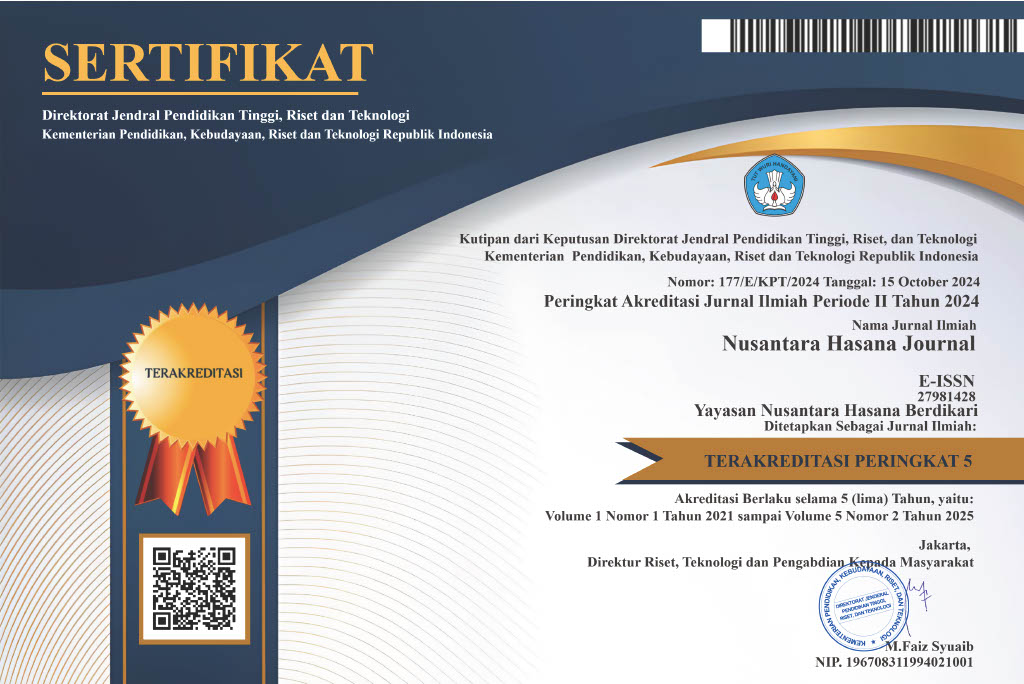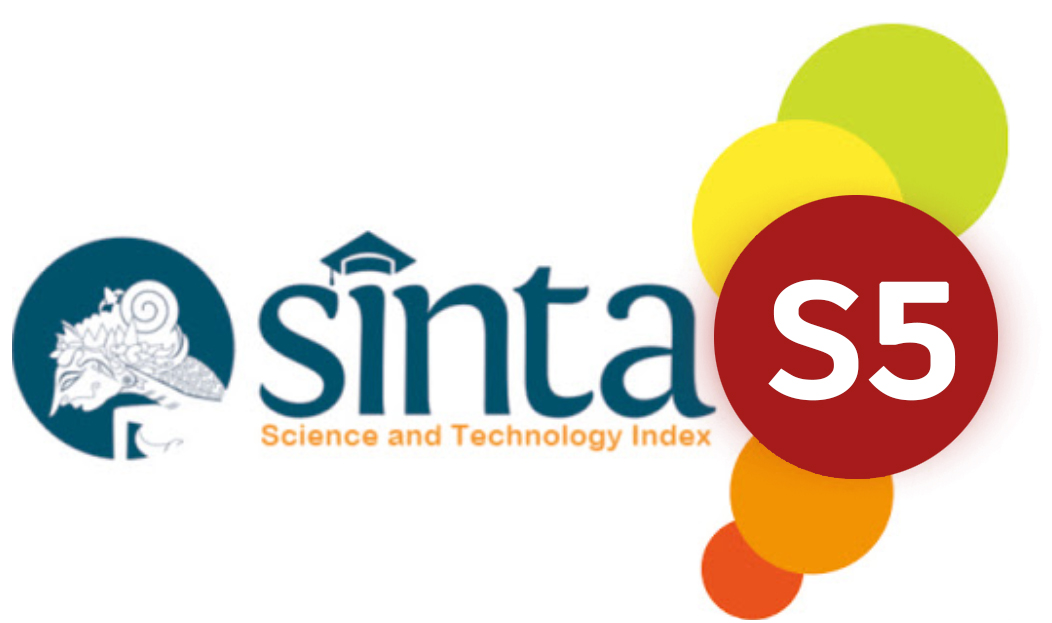STUDI RESTROSPEKTIF PREVALENSI DAN PROFIL PASIEN HERNIA INGUINALIS PADA ANAK DI RSUP DR. M. DJAMIL PADANG TAHUN 2020- 2022
DOI:
https://doi.org/10.59003/nhj.v5i2.1564Keywords:
Inguinal hernia in children, Gender, Age, Classification of hernia, Family history, Location of herniaAbstract
An inguinal hernia is a condition of protrusion of an intestinal organ into a cavity through a defect or thin or weak part of the wall of the inguinal ring. The material that enters is more often the small intestine, but can also be fatty tissue or omentum. Inguinal hernias account for 75% of all hernias. The comparative incidence of inguinal hernia is 13.9% in men and 2.1% in women. The risk of incidence increases fourfold in patients with a family history of inguinal hernia compared to patients without a family history. The classification of inguinal hernia consists of lateral inguinal hernia, medial inguinal hernia, and pantalone hernia. Planned (elective) herniotomy surgery is the main management after diagnosis to avoid incarceration. This study aims to determine the prevalence and characteristics of Inguinal Hernia in children at RSUP.DR.M.Djamil Padang in 2020-2022. This research method is descriptive observational research. The sample in this study were patients who had been diagnosed with inguinal hernia in children at DR. M. Djamil Padang Hospital, selected using simple random sampling technique. Research data were obtained from medical records of 46 patients who met the inclusion criteria. The results showed that the most gender was male with 40 people (87%) inguinal hernia in children. Based on age, the age group 0-1 year of inguinal hernia patients in children is higher at 58.7%. All samples suffered from lateral inguinal hernia (100%). All patients had no family history (100%). The location of inguinal hernia was mostly unilateral on the right side, 69.9%.
Downloads
References
Hernia E. (2015). Hernia Inguinalis. Syifa Medika, 6 (1).
Fitri A. (2021). Gambaran Penderita Hernia Inguinalis Pada Anak Di RSMH Palembang. Palembang: Fakultas Kedokteran Universitas Sriwijaya.
Igirisa RA, Lampus HF, Lengkong AC. (2023). Patofisiologi dan Faktor-faktor yang Berhubungan dengan Hernia Inguinalis pada Anak Pathophysiology and Associated Factors of Inguinalis in Children. Med scope J, 5 (1): 38-44.
Chen YH, Wei CH, Wang KWK. (2018). Children With Inguinal Hernia Repairs: Age and Gender Characteristics. Glob Pediatr Heal, 5.
Putra KR. (2022). Karakteristik Penderita Hernia Inguinalis Di Rumah Sakit Umum Daerah Drs. H. Amri Tambunan Tahun 2021-2022. Skripsi.
Nurhuda M, Fitriyasti B, Siana Y, Prawita N. (2022). Faktor Risiko Pasien Hernia Inguinalis Di RSUP Dr. M. Djamil Padang. 2 (7): 268-275.
Wahid F, Isnaniah, Sampe J, Langitan A. (2019). Hernia Inguinalis Lateralis Dextra Dengan Hemiparese Sinistra. J Med Prof, 1 (1): 12.
Mugni D. (2017). Karakteristik Pasien Hernia Inguinalis Di RSU Kota Tangerang Selatan Tahun 2015.
Ashfaq M, Manzoor S, Mushtaq M. (2017). Risk factors for the complications of paediatric incarcerated inguinal hernia. Pakistan J Med Heal Sci, 11: 1466-1468.
Dunphy, Botsford. (2020). Pemeriksaan Fisik Bedah, Edisi Ke-4. Yogyakarta: Yayasan Essentia Medika.
Dudley, Waxmann. (1989). An Aid To Clinical Surgery, 4nd Ed. Singapore: Longman.
Kawalec AM. (2023). Paediatric inguinal hernia anatomical classifications – new perspectives forstudy design. J Pre-Clinical Clin Res, 17: 106-108.
Viidik T, Marshall DG. (1980). Direct inguinal herniasin infancy and early childhood. J Pediatr Surg, 15: 646-647.
Downloads
Published
How to Cite
Issue
Section
License
Copyright (c) 2025 Mhd Nurhuda

This work is licensed under a Creative Commons Attribution-NonCommercial-ShareAlike 4.0 International License.
NHJ is licensed under a Creative Commons Attribution-NonCommercial-ShareAlike 4.0 International License.
Articles in this journal are Open Access articles published under the Creative Commons CC BY-NC-SA License This license permits use, distribution and reproduction in any medium for non-commercial purposes only, provided the original work and source is properly cited.
Any derivative of the original must be distributed under the same license as the original.
























